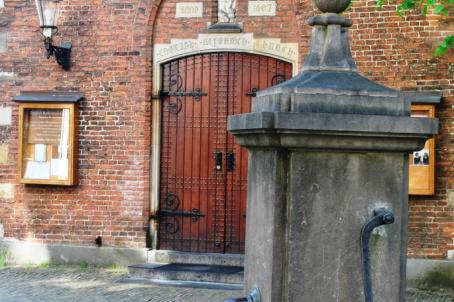English Reformed Church
The English Reformed Church is an old Catholic church reopened in 1607 as an English Protestant church. Since the late 1970s, she has played an important role in chamber music in Amsterdam.
The English Reformed Church is an old Catholic church reopened in 1607 as an English Protestant church. Since the late 1970s, she has played an important role in chamber music in Amsterdam.

Ever since the beguinage was founded at the beginning of the fourteenth century, there has been a chapel on this site. When the English Protestants took over the medieval chapel in 1604 , the Catholic beguines went to church elsewhere in the beguinage. In 1665 , two houses on this site were merged into one church space. On 2 July 1671, the first stone was laid for the major renovation into a fully-fledged church space based on a design by Philips Vingboons.

As early as 1397 the Beguines had a small chapel dedicated to the Blessed Virgin Mary. On 17 October 1419, after the enlargement of the Beguinage, Matthias, titular Bishop of Biduane (a small town on the Adriatic), in his capacity as vicar-general of Frederic III, Bishop of Utrecht, solemnly consecrated a new chapel. This chapel, with its own burial ground, was dedicated to the Blessed Virgin Mary, Saint John the Evangelist and the apostle Matthew. The church was badly damaged during the two great fires of 23 April 1421 and 25 May 1452. After its restoration, it was re-dedicated.

In 1631, the city of Amsterdam gave permission to build a new church building on the site of the seven buildings. The church was put into use in 1633. The church is built on an irregular ground plan. The interior is rectangular in shape, surrounded by galleries that rest on Ionic and Tuscan columns . Doric columns support the roof structure. The pulpit dates from 1640.